#EarthSky
Text
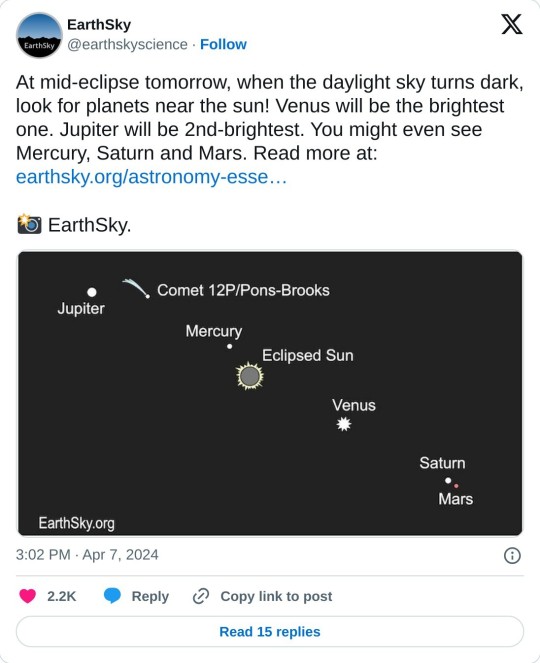
#solar eclipse#solar eclipse 2024#total solar eclipse#eclipse#eclipse 2024#space#earthsky#my post#cosmos#eclipse2024#astronomy#galaxy#science#nasa
24 notes
·
View notes
Text
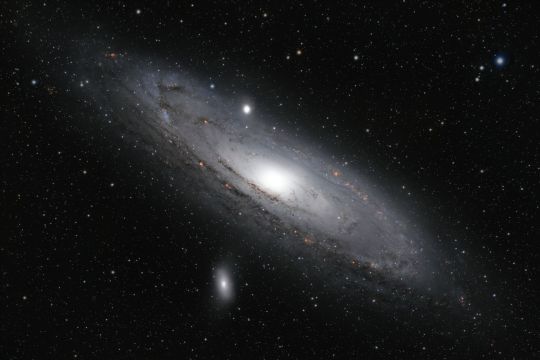
The spiral galaxy next door
View at EarthSky Community Photos
Steven Bellavia in Mattituck, New York, shared this detailed image of the Andromeda galaxy: the closest spiral galaxy to our home galaxy, the Milky Way. It's only about 2.5 million light-years away. The Andromeda galaxy probably looks like our Milky Way in space. It's slightly bigger than our Milky Way, but similar in mass, a vast star island with dark lanes of dust and places where new stars are forming. Steven said he put together his last 2 years of data on this galaxy - a total of 57 hours - to create this composite image. He wrote: "The star-forming regions appear as small red 'knots' in and beyond the spiral arms. And the collections of young, hot blue stars appear as blue regions." Great work, Steven, thank you!
#andromeda#galaxy#andromeda galaxy#universe#space#astronomy#sky#stars#skywatching#god's creation#gods creation#earthsky
9 notes
·
View notes
Photo
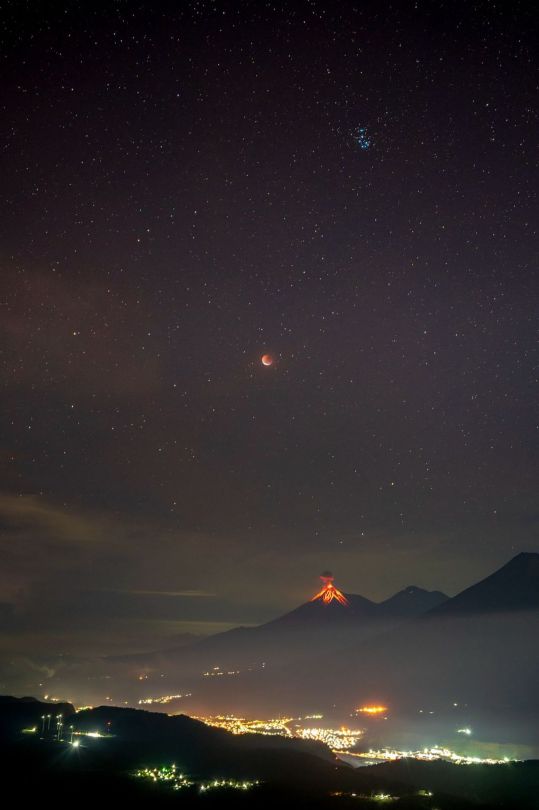
This photo by David Rojas in San Vicente Pacaya, Guatemala, has been a hit on EarthSky's social media this week. David wrote: "The total lunar eclipse at dawn on Tuesday, November 8. You can see the moon in its total phase with its characteristic red color of a lunar eclipse. Above the moon the star cluster of the Pleiades (Messier 45). And below the Fuego volcano (with lava) and Acatenango." :: [EarthSky]
* * * *
“Reshaping life! People who can say that have never understood a thing about life—they have never felt its breath, its heartbeat—however much they have seen or done. They look on it as a lump of raw material that needs to be processed by them, to be ennobled by their touch. But life is never a material, a substance to be molded. If you want to know, life is the principle of self-renewal, it is constantly renewing and remaking and changing and transfiguring itself, it is infinitely beyond your or my obtuse theories about it.”
― Boris Pasternak, Doctor Zhivago
#Guatemala#David Rojas#San Vicente Pacaya Guatemala#EarthSky#eclipse#night sky#Boris Pasternak#Doctor Zhivago#quotes#life itself#self-renewal
60 notes
·
View notes
Text
EarthSky | 2023 Lyrid meteor shower: All you need to know
2 notes
·
View notes
Text
Plunge into the darker side of the night sky, and get to know dark nebulae. Dark nebulae – or absorption nebulae – are clouds of gas and dust in space that are dense enough to obscure and block light from background stars. These vast clouds are mostly composed of molecular hydrogen. Often, they are locations where material is coalescing to form new stars. American astronomer Edward Emerson Barnard was the first to create a large catalog of 182 dark nebulae in the year 1919. Since then, hundreds more have been found and charted in our Milky Way galaxy.
0 notes
Text
Astronomers Witness Time Moving in Slow Motion in Early Universe
"Mind-blowing discovery: Astronomers observe time slowing down in the early universe, confirming Einstein's theory! #Astronomy #Science"
In a mesmerizing revelation, astronomers have uncovered a captivating phenomenon in the vast expanse of the early universe. Geraint Lewis from the University of Sydney shares an extraordinary discovery, as detailed in a story published in EarthSky. Our understanding of physics suggests that the expansion of space influences the flow of time, causing the distant universe to appear in slow…

View On WordPress
#astonishing wonders#astronomers#celestial giants#cosmic time dilation#distant universe#early universe#EarthSky#Geraint Lewis#physics#quasars#slow motion#space expansion#special theory of relativity#time moving#University of Sydney
0 notes
Photo

Happy Worm Moon 🌕💕 I read my tarot cards this beautiful March full moon evening and it was so illuminating. I pulled three: (1) The Star, (2) The Moon, and (3) The Emperor. Such a befitting spread. I’m coming full circle with a lot of things in my life and I’ve been seeing the signs for months, but none as obvious as this. The main message I received from my higher self in today’s reading was actually a message from my younger self saying: “I love myself and the woman I’ve become. She’s a badass. She works hard. She knows her worth. She’s loyal and loving. She’s smart. She’s kind. She’s sassy and witty. There’s no one else in the world like her and I’m lucky she’s Me.”
#March #MarchFullMoon #FullMoon #WormMoon #WormMoon2023 #2023 #innerchild #innerchildhealing #fullcircle #soulwork #soulgrowth #higherself #tarot #tarotreading #jupiter #venus #nightsky #earthsky
#march#marchfullmoon#fullmoon#wormmoon#wormmoon2023#2023#innerchild#innerchildhealing#fullcircle#soulwork#soulgrowth#higherself#tarot#tarotreading#jupiter#venus#nightsky#earthsky
0 notes
Text
EarthSky | July 8 … 99% of the world’s population in sunlight simultaneously?
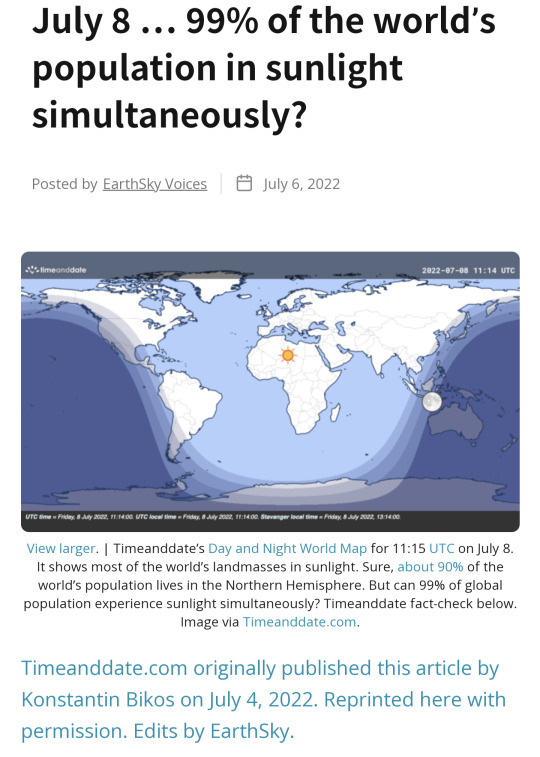

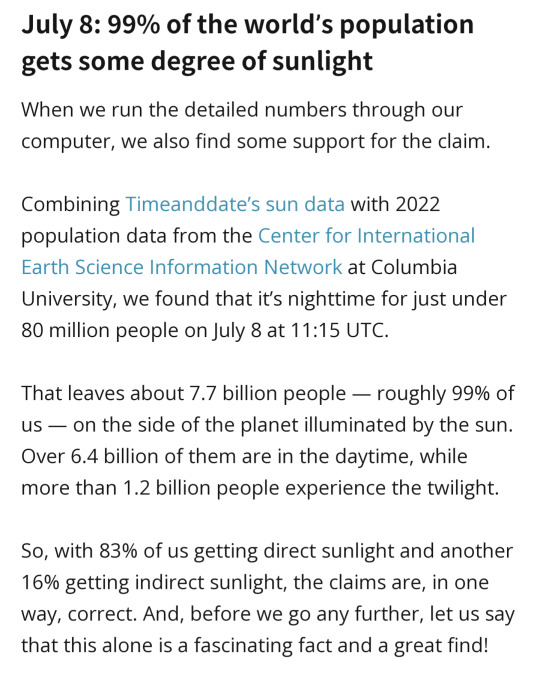

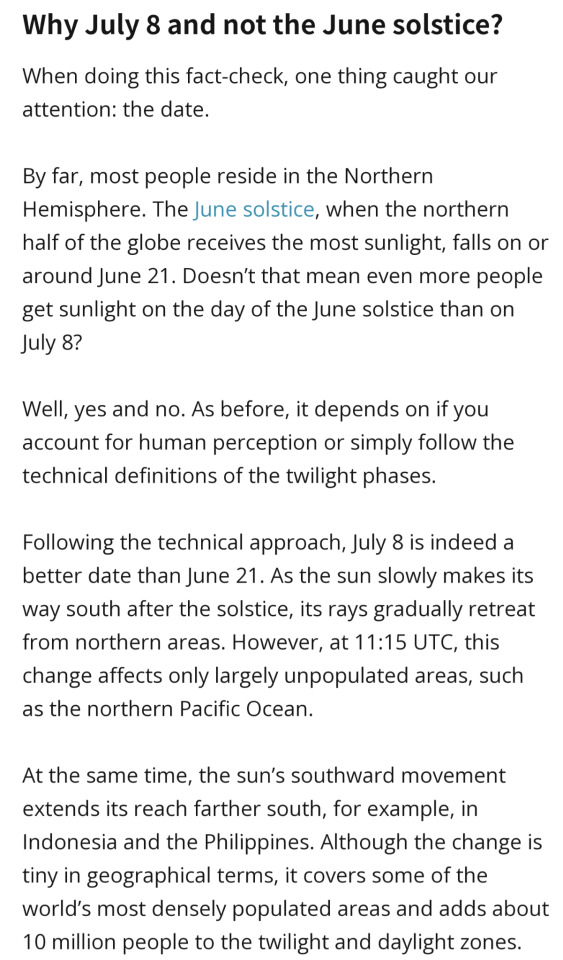
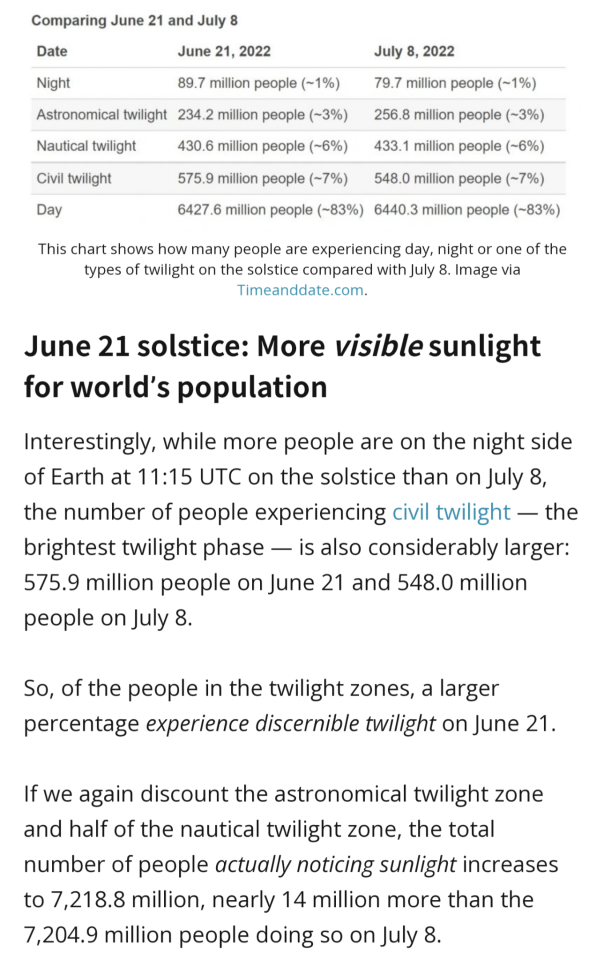
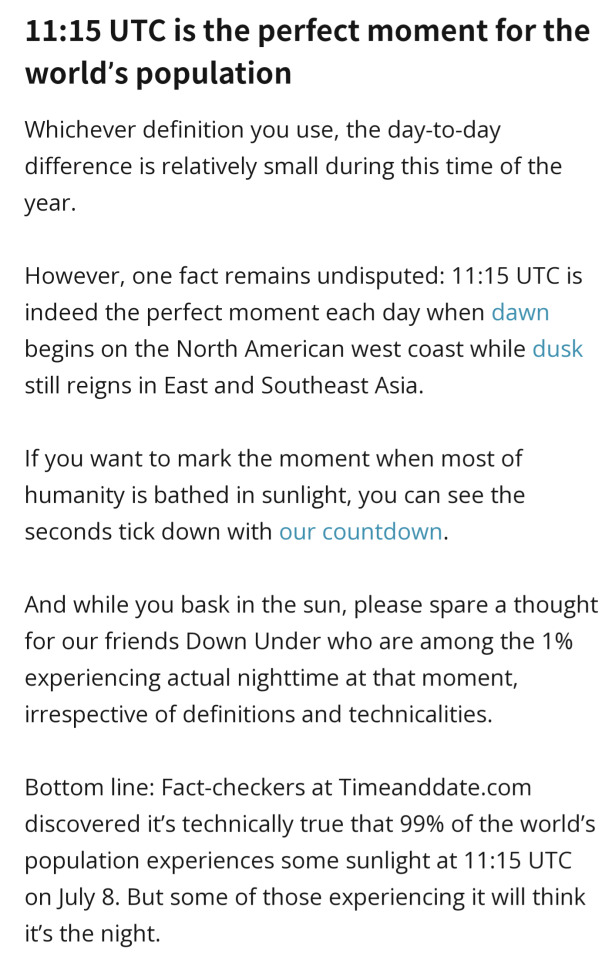
0 notes
Link
An analysis of samples from asteroid Ryugu, brought to Earth by Japan’s Hayabusa 2 mission in 2020, reveals that the asteroid is rich in primitive organic material. That’s according to researchers in Japan, who detailed their findings in two new papers presented at the 53rd annual Lunar and Planetary Science Conference in Texas, March 7 to 11, 2022. The asteroid contains 10 types of amino acids, the building blocks of proteins and life as we know it on Earth. The scientists said these are the most primitive asteroid samples yet studied. They said the findings provide important clues as to how life might have first developed on Earth and how the raw organic materials might have been delivered to Earth billions of years ago.
Asteroid 162173 Ryugu is a C-Type asteroid characterized by a low-albedo of IR reflectance spectrum consisting of hydrous minerals and carbonaceous materials [1]. The C-type asteroids are distributed primarily in the main belt between Mars and Jupitar, and regarded as parent bodies of carbonaceous meteorites [2]. Primitive carbonaceous meteorites often contain wide ranges of soluble organic matter (SOM) including prebiotic organic compounds such as amino acids [3]. Therefore, C-type asteroids might have delivered prebiotic organic molecules essential to the emergence of life in the primitive Earth [4]. The meteoritic organic matter is among the oldest material in the Solar System, possibly recording a long history from molecular cloud and protosolar nebulae to planetisimal and parent body processes. Furthermore, the alteration and preservation processes of SOM on an asteroid surface requires investigation since the asteroid surface is subjected to impacts, cosmic rays and solar radiation under a high-vacuum condition. The surface material of Ryugu can provide the first opportunity to examine the occurrence of organic compounds with respect to chemical evolution and organic resource distribution of the Solar System.
#SOLUBLE ORGANIC COMPOUNDS IN ASTEROID 162173 RYUGU#Asteroid Ryugu harbors life’s building blocks#earthsky#older news that I missed in March#amino acids#hayabusa 2#soluble organic matter
0 notes
Text

I swear to god I am not a furry, but i sure do make art like one lol
This is a wolf o mine from wolvden cause u know, obsessed w the game cause i am gay and cringe
3 notes
·
View notes
Text

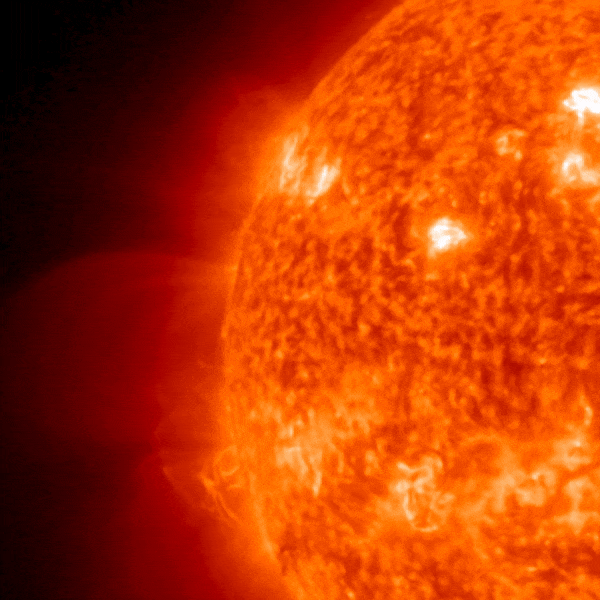


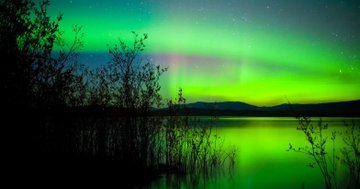
Auroras reported and more coming - For most of the past 24 hours, Earth's magnetic field has been at disturbed to active levels. Conditions for more auroras are expected for tonight. Read the sun news.
#aurora#earthsky#Earth's magnetic field#auroras#magnetic field#sun#nature#astronomy#universe#space#sky#natures#godscreation#god's creation
11 notes
·
View notes
Text
so international space station astronauts apparently dropped a tool bag during a spacewalk. and if you look outside when the ISS is in your region, you can see it with binoculars
The tool bag is now orbiting our planet just ahead of the ISS with a visual magnitude of around 6, according to EarthSky. That means it is slightly less bright than the ice giant Uranus, the seventh planet from the sun. As a result, the bag — officially known as a crew lock bag — is slightly too dim to be visible to the unaided eye, but skywatchers should be able to pick it up with binoculars.
To see it for yourself, first find out when you can find spot the space station over the next few months (NASA even has a new app to help you). The bag should be floating two to four minutes ahead of the station. As it descends rapidly, the bag is likely to disintegrate when it reaches an altitude of around 70 miles (113 kilometers) over Earth.
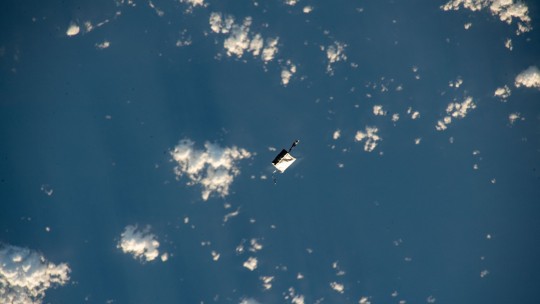
she's fucking magnificent
42K notes
·
View notes
Text
Ides of March
The Romans considered the day a deadline for settling debts, maybe similar to our looming Tax Day here in the U.S.
.
In the ancient Roman calendar, each month had an Ides. For the months of March, May, July and October, the Ides fell on the 15th day. In every other month, the Ides fell on the 13th day.
The word Ides derives from a Latin word that means to divide. In the beginning, the Ides marked the full moons, but because calendar months and lunar months were different lengths, they quickly got out of step.
The Romans also had a name for the first day of every month: the Kalends. Our word calendar derives from Kalends.
In fact, our modern calendar is very much like the one that Julius Caesar enacted the year before his death. It had 365 days and 12 months each year. It even took into account the fact that Earth’s orbit around the sun isn’t a whole number of days by adding a leap day every few years.
Georgianna Ziegler: The concept of the Ides of March would have resonated with English citizens in 1599, the year Shakespeare's play Julius Caesar was probably performed.
This whole business of the Ides of March and timekeeping in the play would have had a strong impact on audiences.
They were really struck by the differences between their Julian calendar [a revision of the Roman calendar created by Caesar] and the Gregorian calendar kept in Catholic countries on the continent.
Because the two calendars featured years of slightly different lengths, they had diverged significantly by the late 16th century and were several days apart
#i post#i ramble in the tags#ides of march#holiday posts#so im part of a tea group on fb#i know#but somebody posted screenshots of the earthsky article#and i thought it was really interesting#i tried to factcheck it by#national geographic#but i had to use#12ft ladder#history#julius caesar#julian calendar#gregorian calendar#telling someone to beware the fifteenth#vs beware tax day when all debts come due#really does hit different
0 notes
Text
The Lucy spacecraft made a surprise discovery on November 1, 2023. While on the way for its mission to study the Trojan asteroids in Jupiter’s orbit, it made a test run past a main-belt asteroid. The plan was to test the spacecraft’s tracking system by imaging a little asteroid named Dinkinesh as it flew past it at 10,000 mph (16,000 km/h). But Dinkinesh had a surprise waiting. Lucy spied not one asteroid but two! As the spacecraft passed within 270 miles (430 km) of its target, it discovered a binary asteroid, with one parent asteroid and one moonlet.
These new images of Dinkinesh show that the parent asteroid is about 0.5 mile (790 m) at its widest, while the moonlet is around 0.15 mile (220 m) in size.
This successful mini-mission makes Dinkinesh and its moon the smallest main-belt asteroids ever well-imaged by a spacecraft.
0 notes